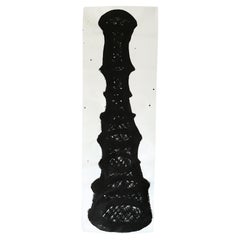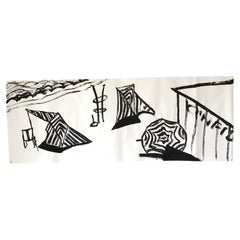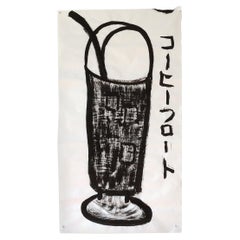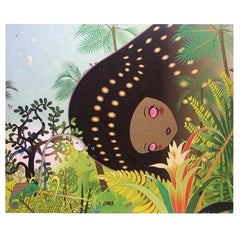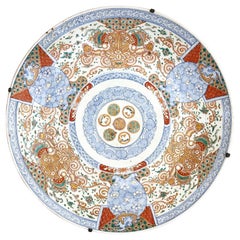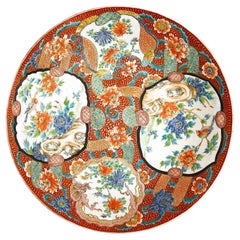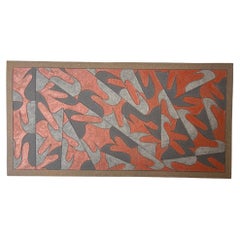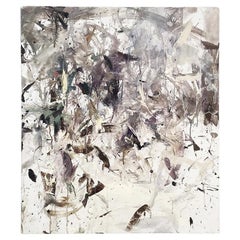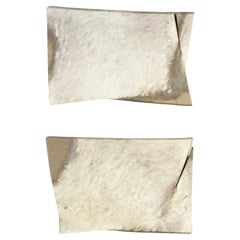Contemporary Japanese Art
21st Century and Contemporary Japanese Contemporary Art
Paper
21st Century and Contemporary Japanese Contemporary Art
Paper
21st Century and Contemporary Japanese Contemporary Art
Paper
Early 2000s Japanese Modern Contemporary Art
Paper
Antique Late 19th Century Japanese Contemporary Art
Porcelain
Antique Late 19th Century Japanese Contemporary Art
Porcelain
Early 2000s Contemporary Art
Ceramic
Early 2000s Japanese Post-Modern Contemporary Art
Canvas, Wood
2010s Japanese Post-Modern Contemporary Art
Canvas, Wood
2010s Japanese Modern Contemporary Art
Wood
2010s Japanese Modern Contemporary Art
Wood
2010s Japanese Modern Contemporary Art
Wood
2010s Japanese Modern Contemporary Art
Wood
2010s British Contemporary Art
Silk
Vintage 1970s Japanese Contemporary Art
Metal
Late 20th Century Japanese Contemporary Art
Porcelain
21st Century and Contemporary Japanese Contemporary Art
Marble
21st Century and Contemporary Japanese Modern Contemporary Art
Paper
21st Century and Contemporary Japanese Modern Contemporary Art
Paper
Vintage 1970s Japanese Modern Contemporary Art
Canvas
21st Century and Contemporary Japanese Minimalist Contemporary Art
Marble
21st Century and Contemporary Japanese Modern Contemporary Art
Marble
21st Century and Contemporary Japanese Modern Contemporary Art
Marble
21st Century and Contemporary Japanese Modern Contemporary Art
Marble
21st Century and Contemporary Japanese Modern Contemporary Art
Marble
21st Century and Contemporary Japanese Modern Contemporary Art
Marble
21st Century and Contemporary Japanese Modern Contemporary Art
Marble
21st Century and Contemporary Japanese Modern Contemporary Art
Marble
21st Century and Contemporary Japanese Modern Contemporary Art
Marble
21st Century and Contemporary Japanese Modern Contemporary Art
Marble
21st Century and Contemporary Japanese Modern Contemporary Art
Marble
21st Century and Contemporary Japanese Modern Contemporary Art
Marble
21st Century and Contemporary Japanese Modern Contemporary Art
Marble
2010s French Contemporary Art
Antler
21st Century and Contemporary Japanese Modern Contemporary Art
Marble
21st Century and Contemporary Japanese Modern Contemporary Art
Marble
Late 20th Century Japanese Post-Modern Contemporary Art
Aluminum
Mid-20th Century Japanese Mid-Century Modern Contemporary Art
Acrylic, Canvas, Plastic, Wood
21st Century and Contemporary Japanese Decorative Art
Brocade, Silk
21st Century and Contemporary Japanese Meiji Decorative Art
Gold Leaf
2010s Contemporary Figurative Paintings
Oil, Canvas
2010s Contemporary Figurative Paintings
Oil, Canvas
2010s Contemporary Figurative Paintings
Oil, Canvas
2010s Contemporary Figurative Paintings
Canvas, Oil
2010s Contemporary Figurative Paintings
Canvas, Oil
2010s Contemporary Figurative Paintings
Oil, Canvas
2010s Contemporary Figurative Paintings
Canvas, Oil
21st Century and Contemporary Japanese Meiji Paintings and Screens
Brocade, Silk
2010s Conceptual Mixed Media
Plastic, Lacquer
2010s Contemporary Figurative Paintings
Canvas, Oil
21st Century and Contemporary Japanese Meiji Decorative Art
Silk, Brocade
2010s Contemporary Figurative Paintings
Canvas, Oil
Early 2000s Japanese Organic Modern Sculptures and Carvings
Bamboo
2010s Contemporary Figurative Paintings
Canvas, Oil
2010s Contemporary Figurative Paintings
Canvas, Oil
2010s Contemporary Figurative Paintings
Canvas, Mixed Media, Oil, Acrylic, Gouache
2010s Contemporary Figurative Paintings
Canvas, Mixed Media, Oil, Acrylic, Gouache
2010s Contemporary Figurative Paintings
Canvas, Mixed Media, Oil, Acrylic, Gouache
2010s Contemporary Figurative Paintings
Canvas, Mixed Media, Oil, Acrylic, Gouache
2010s Contemporary Figurative Paintings
Canvas, Mixed Media, Oil, Acrylic, Gouache
- 1
- ...
Contemporary Japanese Art For Sale on 1stDibs
How Much is a Contemporary Japanese Art?
- What is contemporary art?1 Answer1stDibs ExpertSeptember 25, 2019
Contemporary art denotes work created by 21st-century artists.
- 1stDibs ExpertFebruary 21, 2024In contemporary art, conceptual art is a movement that began in the 1960s. Artists producing conceptual art assign more importance to the idea behind the art than to the piece itself. An example is Joseph Kosuth’s One and Three Chairs, a piece consisting of a real chair, a photograph of a chair and the dictionary definition of the word chair. When the work was displayed, Kosuth included instructions for any chair to be photographed and then displayed beside its image. In this way, the chair itself is not the artwork. Rather, the art comes from examining the way the object, image and words provide competing and complementary definitions of what a chair is. Find a large selection of fine art on 1stDibs.
- 1stDibs ExpertApril 26, 2024The meaning of contemporary art is art produced by living artists. The category typically includes works created in the late 20th century as well as in the 21st century. Given its timeliness, contemporary art often responds to current issues and themes that are relevant to an everyday audience. Contemporary art succeeded modern art, which is art made during a period that began in approximately 1850. On 1stDibs, shop a wide variety of contemporary art.
- 1stDibs ExpertApril 16, 2024Contemporary art is important because of how it responds to the current moment. Contemporary art generally describes pieces created after 1970 or being made by living artists anywhere in the world. Through their works, contemporary artists provide commentary about social issues, history and the human condition. By engaging with contemporary art, viewers can gain a deeper understanding of the world and new perspectives. On 1stDibs, shop a wide range of contemporary art.
- 1stDibs ExpertSeptember 25, 2019
Contemporary art encompasses painting, sculpture, photography, installation, performance and video art, among other genres.
- 1stDibs ExpertSeptember 25, 2019
Contemporary art has no defining feature or characteristic.The term simply refers to recent creations.
- 1stDibs ExpertApril 5, 2022There are a variety of different types of Japanese art. One of the oldest and most admired forms of Japanese art is the art of calligraphy, which originated in the sixth or seventh century. Another type of art, ukiyo-e, is the art of the woodblock print, which depicts scenes of female beauties; kabuki actors, sumo wrestlers and more. You’ll find a variety of Japanese artwork from some of the world’s top art dealers on 1stDibs.
- 1stDibs ExpertApril 5, 2022The writing on Japanese art is calligraphy art called shodo. It uses Japanese kanji and kana characters. There are a variety of different shodo styles of art, including Kaisho, which is the basic, foundational form of the art. On 1stDibs, find a range of Japanese calligraphy art from top sellers..
- 1stDibs ExpertApril 16, 2024The focus of Japanese art varies. Many traditional Japanese artists sought to capture the beauty of nature in their works. However, other Japanese artists have produced work with Buddhist themes, and contemporary artists working in the country have been inspired by a range of subjects, from socioeconomic and political issues to pop culture. On 1stDibs, explore a large selection of Japanese art.
- 1stDibs ExpertApril 26, 2024The difference between modern art and contemporary art comes down to age. Contemporary art refers to art produced by artists who are still alive or were active during the 1960s and later. Modern art is the term for artworks made between 1850 or 1860 and 1960. On 1stDibs, shop a large collection of modern and contemporary art.
- 1stDibs ExpertSeptember 25, 2019
The term contemporary is applied to art by 21st-century artists; modern art refers to works created from the1880s and through the 1960s.
- 1stDibs ExpertSeptember 23, 2024What the Japanese sea art is called depends on its type. Many examples of sea art from Japan are called ukiyo-e. This term refers to woodblock prints made during the 17th, 18th and 19th centuries. The Great Wave off Kanagawa by Katsushika Hokusai is arguably the most famous ukiyo-e print depicting the sea. On 1stDibs, find a wide variety of Japanese woodblock prints.
- 1stDibs ExpertOctober 15, 2024To tell if art is Japanese or Chinese, study the piece's characteristics. With paintings, Chinese artists often use more color and tend to fill their entire canvases, while Japanese artists often include more negative space and choose subtler colors. There are also differences between the brushstrokes typical of traditional Chinese and Japanese art. In Japanese paintings, brushstrokes are often short and sharp. On the other hand, Chinese paintings often display longer, more fluid brushstrokes. Learning about the defining features of various art forms and periods and looking at examples of pieces made by Japanese and Chinese artists can help you learn to spot subtle differences. Explore a diverse assortment of Japanese and Chinese art on 1stDibs.
- 1stDibs ExpertApril 5, 2022Many art styles originated in Japan and grew in popularity over the years. Some of the most popular styles include shodo (calligraphy), ikebana, kanou and yamato-e. You’ll find a wide variety of authentic Japanese art from some of the world’s top dealers on 1stDibs.
- 1stDibs ExpertApril 5, 2022What Japanese wall art is called depends on its type. There are numerous kinds of Japanese paintings and prints, including nihonga and ukiyo-e. A Japanese wall scroll is known as a kakejiku or kakemono. On 1stDibs, find a variety of Japanese wall art.
